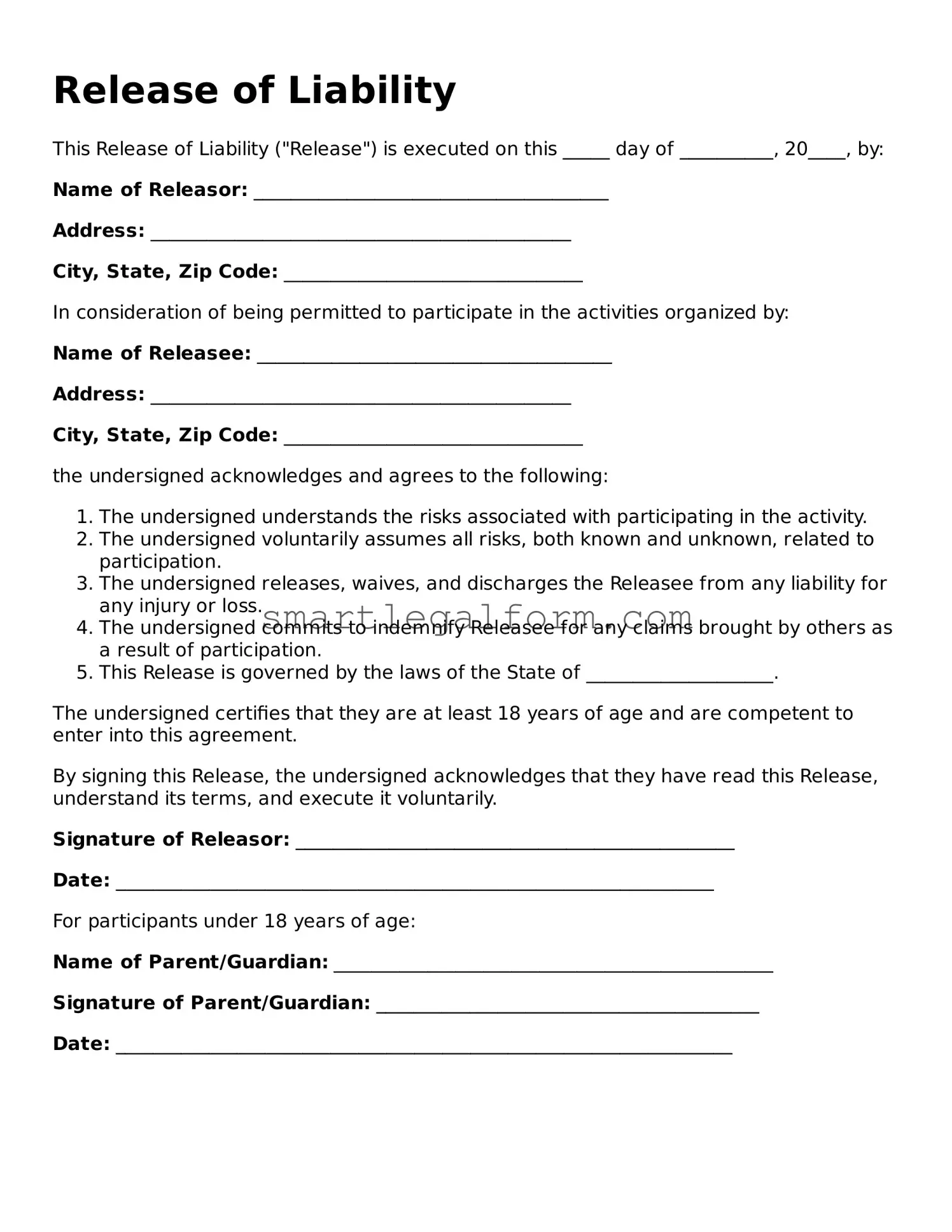Release of Liability
This Release of Liability ("Release") is executed on this _____ day of __________, 20____, by:
Name of Releasor: ______________________________________
Address: _____________________________________________
City, State, Zip Code: ________________________________
In consideration of being permitted to participate in the activities organized by:
Name of Releasee: ______________________________________
Address: _____________________________________________
City, State, Zip Code: ________________________________
the undersigned acknowledges and agrees to the following:
- The undersigned understands the risks associated with participating in the activity.
- The undersigned voluntarily assumes all risks, both known and unknown, related to participation.
- The undersigned releases, waives, and discharges the Releasee from any liability for any injury or loss.
- The undersigned commits to indemnify Releasee for any claims brought by others as a result of participation.
- This Release is governed by the laws of the State of ____________________.
The undersigned certifies that they are at least 18 years of age and are competent to enter into this agreement.
By signing this Release, the undersigned acknowledges that they have read this Release, understand its terms, and execute it voluntarily.
Signature of Releasor: _______________________________________________
Date: ________________________________________________________________
For participants under 18 years of age:
Name of Parent/Guardian: _______________________________________________
Signature of Parent/Guardian: _________________________________________
Date: __________________________________________________________________
